Throughout history, men have carried wallets to hold their personal belongings such as coins, bills, and important papers. The evolution of the men’s wallet has been a long and fascinating journey, with various changes made to the design and materials used to suit the changing needs and lifestyles of men over time. The earliest form of a wallet was a small pouch made of animal hide or fabric. It was known as a coin purse. It was used to carry coins and small objects and was often worn on a belt or around the neck. In the 17th century, leather wallets with compartments for bills and coins were introduced. By the 19th century, wallets became an essential accessory for men.
During the 20th century, wallets underwent significant changes to adapt to the changing needs of men. With the increasing use of paper money, wallets were designed with larger compartments for bills. The introduction of credit cards and ID cards also led to the creation of cardholders and slim wallets. Today, men’s wallets come in a variety of styles, materials, and designs to cater to different preferences and needs. From classic leather wallets to minimalist cardholders, there is a wallet for every taste and lifestyle. So, this article will take a closer look at the evolution of the men’s wallet and its importance in modern-day society.
Ancient Greece: Coin Purses
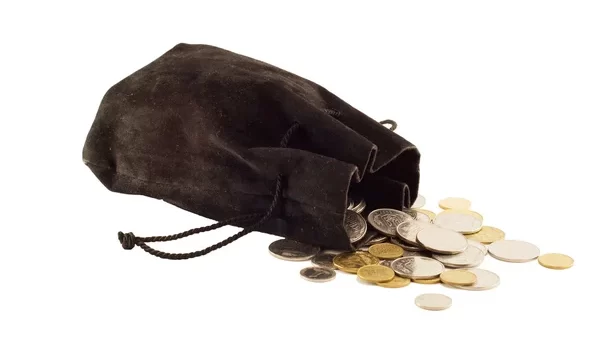

One of the world’s oldest examples of a wallet discovered belonged to Otzi the Iceman. It was a very rare and intriguing ancient finding that accurately described ancient wallets. Scientists estimate that this ancient human artifact dates to roughly 3,300 BC. Moreover, these prehistoric human remains had a currency pouch fastened to their hip when they were discovered. Foraging and hunting for food were vital activities that our ancestors engaged in every day in the past. Of course, having hands-free hunting was essential! Therefore, early man needed something like a forerunner to a wallet so much. Early wallets were made of lambskin, cow, horse leather, or other durable material and were worn by the ancient Greeks.
They were formed like little pouches or knapsacks. A drawstring was used to tie this around the wearer’s neck. They were used to transport the necessities, such as food and other supplies, and were typically fastened to a belt. According to classical experts, everyday Ancient Greek life included the use of wallets that, to a modern audience, would have appeared more like a backpack than a standard bifold. In fact, until far later in history, the name “wallet” did not refer to the compact, frequently flat money container we know and use today. During this period, wallets were big enough to fit enough food in them to last a day or a week. Thus, how did the original wallet that we are more accustomed to today evolve from these early means of carrying necessities? Continue reading.
Renaissance – 1600s
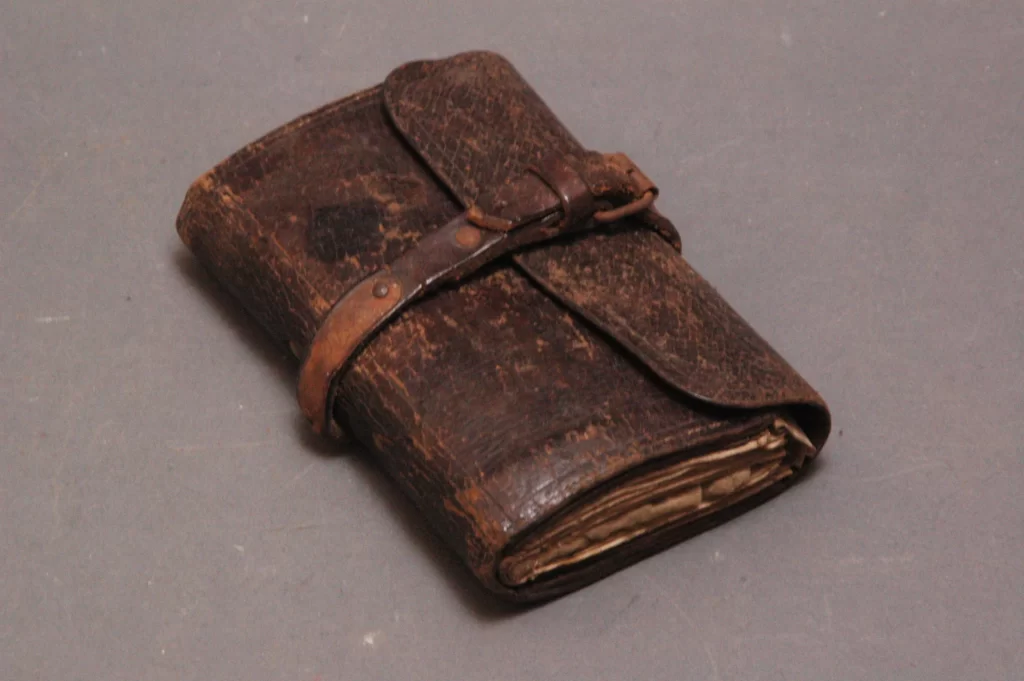

The first true wallets appeared when paper money started to be created in the West and Europe in the 1600s. These flat-case wallets had a small ID card and calling card section and were made of horse or calf leather. During this time, wallets became more than just practical items for carrying coins and other small objects. Thus, they became works of art in themselves, with intricate designs and embellishments. One notable feature of Renaissance wallets was the use of symbolism.
Many wallets were adorned with symbols that were meant to represent wealth, power, or social status. For example, a wallet might be decorated with the family crest of its owner. Moreover, it was decorated with symbols of the zodiac that were believed to bring good fortune. Renaissance wallets also reflected the era’s fascination with classical culture. Many wallets were designed in the style of ancient Greek or Roman objects, such as amphorae or urns. Also, these designs often featured intricate patterns and motifs that were inspired by classical art and architecture.
Pin Money Pouches – 1700s


The origin of pin money pouches can be traced back to the 16th century when women began to set aside small amounts of money for personal expenses. In the 17th century, this practice became more common, particularly among women of higher social status who had more disposable income. The term “pin money” itself comes from the practice of using the money to purchase pins, which were an essential tool for women’s dressmaking and were often lost or broken. So, pin money pouches were developed as a way to keep this money safe and secure.
The pouches were small and portable and could be easily carried on a woman’s person. Moreover, they were often decorated with elaborate embroidery, lace, or beads, and were considered a symbol of wealth and status. Pin money pouches remained popular throughout the 17th and 18th centuries, but began to decline in use during the 19th century, as women gained more financial independence and fewer restrictions on their spending. Today, pin money pouches are primarily used as decorative or collector’s items, rather than functional accessories.
The Artful Addition of the Bifold Wallet in the 1800s
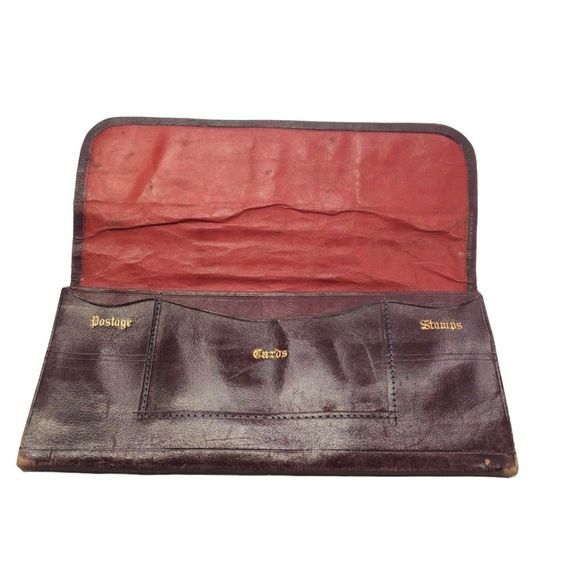

The Industrial Revolution (1760-1840) saw the development of machines that allowed people to manufacture items at a faster rate. This had an immense impact on wallet design, as leather wallets could now be mass-produced at a much higher rate than before. Manufacturers adopted innovative techniques such as stamping and embossing, to make more complex designs. The wallets created during this period were usually simpler and less decorative than their Renaissance counterparts.
In the 18th and 19th centuries, the bi-fold wallet began to emerge as a popular accessory for men. This type of wallet was designed to fold in half, with compartments on either side for holding banknotes, coins, and other small items. Also, early bifold wallets were often made from leather or canvas, and they were often decorated with simple patterns or designs. As the popularity of bifold wallets grew, however, designers began to experiment with new materials and designs. Some wallets were made from exotic materials like alligator or crocodile skin, while others featured intricate designs and patterns inspired by art and architecture.
The Modern Wallet: 19th Century
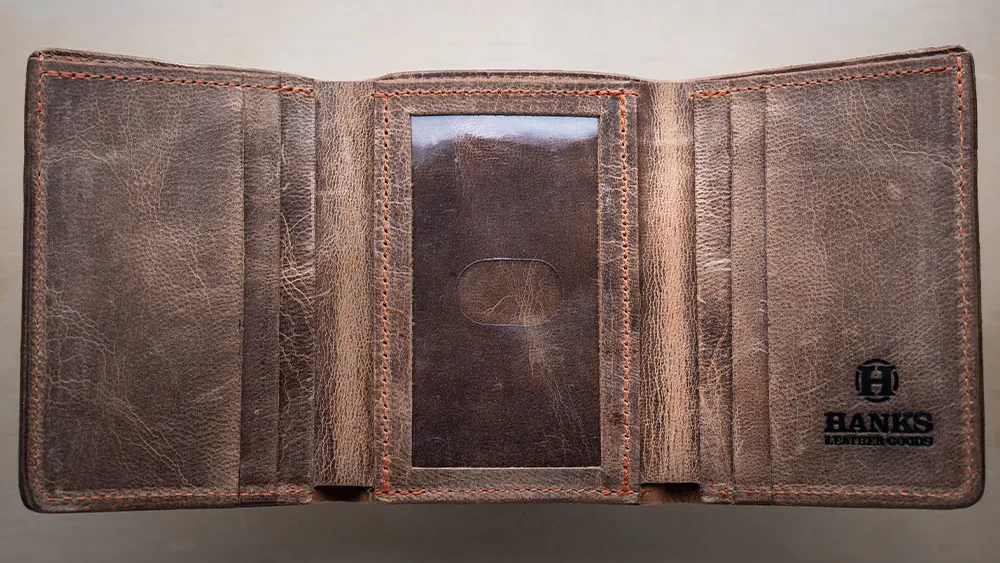

At the beginning of the 19th century, wallets were often carried in a pocket, which was located on the outside of clothing. However, as clothing styles changed and pockets moved to the interior of clothing, wallets also began to change in design to fit into these new pockets. Wallets acquired sufficient capacity and functionality to hold more items than only cash during the 19th century. One section of a wallet was frequently designated for cash and notes, while the other sections held goods like pocket knives and keys. Demand for increasingly opulent materials like precious metals, vibrant textiles, and expensive leathers increased as the middle class expanded.
The addition of zippers and snap closures made wallets more secure. Meanwhile, the introduction of plastic in the 1950s made it a more durable wallet that could withstand everyday wear and tear. As the century progressed, advances in technology and manufacturing allowed for the production of more elaborate and intricate wallet designs, with the introduction of new materials such as celluloid and vulcanized rubber. By the end of the century, wallets had become a common accessory for both men and women, with many different styles and designs available to suit different tastes and budgets. In the 1990s, the minimalist wallet trend began. These wallets were designed to hold only the essentials, such as a few cards and cash. They were often made from unconventional materials. These include carbon fiber or aluminum and were popular among men who wanted a sleek and modern look.
20th Century Men’s Wallet Design Innovations
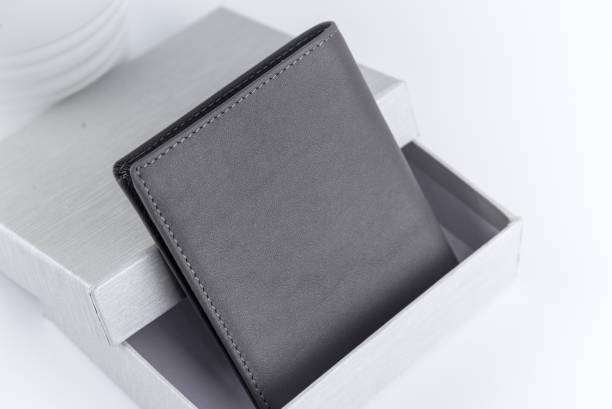

In the 20th century, a slew of new innovations for men’s wallet design emerged. With the invention of plastic in the 1950s, materials like PVC, polyester, and nylon began to be used in wallet construction. Traditional bulky bi-folds have lost favor as we move into the 2000s and beyond due to the trend for more minimal wallet requirements with the introduction of credit and debit cards.
The wallets of choice for today’s modern man are ultra-slim wallets produced from current synthetic, weatherproof fabrics together with gorgeous soft leather in a variety of colors. Furthermore, advancements in printing technology enabled the creation of specialty prints that drastically changed the look and feel of wallets – from floral to plaid and more.
Modern Day Trends


Wallets are now accessible for every requirement and have become an essential accessory for every person in modern times. Wallet styles range from the traditional bi- or tri-fold to the front pocket to travel wallets that hold passports and boarding cards. Today, the cardholder is one of the most popular styles of men’s wallets. These wallets are designed to hold only cards and are often slim and minimalist in design. They are typically made from leather or other high-quality materials and come in a variety of colors and finishes.
The rise of digital payment options has also influenced the design of men’s wallets. Many wallets now come with RFID-blocking technology to prevent electronic theft. Meanwhile, some even have built-in power banks to charge smartphones and other devices. With the rise of technologies like Apple Pay and digital wallets, many consumers now prefer to pay with their phone or tablet instead of a physical wallet. But despite its declining popularity as a payment method, the wallet still remains a way for men to express themselves through expressive and stylish design – from classic bi-folds to designer zippered wallets.
A Brief Summary of Origin of Wallets
| Century | Type of Wallet | Description |
|---|---|---|
| 15th-16th centuries | Coin Purses | Small pouches made of animal hide or fabric, worn on a belt or around the neck to carry coins and small objects. |
| 17th century | Pin Money Pouches | The pouches were small and portable and could be easily carried by a woman |
| 18th-19th centuries | Bifolds | Wallets that fold in half, with compartments for bills and coins. |
| Late 19th century | Trifolds | Wallets that fold in three, with additional compartments for cards and other items. |
| Early 20th century | Breast Wallets | Larger wallets were carried in the breast pocket of a jacket. |
| Mid-20th century | Billfolds | A term coined to describe wallets with a large compartment for bills. |
| Late 20th century | Cardholders | Wallets are designed specifically to carry credit cards, ID cards, and other small items. |
| 21st century | Slim Wallets | Minimalist wallets are designed to carry only the essentials, such as a few cards and cash. |
| Present Day | Digital Wallets | Wallets that use digital technology, such as mobile payment apps and RFID-blocking materials, to enhance security and convenience. |
Final Thoughts
In conclusion, the history of men’s wallets is a fascinating journey that reflects the evolution of men’s needs and lifestyles throughout history. From the simple coin purses worn around the neck to the sleek cardholders of today, the wallet has gone through numerous transformations to adapt to the changing times. Furthermore, as technology continues to advance, it is likely that the design of men’s wallets will continue to change as well.
We can already see the rise of digital wallets and the incorporation of biometric authentication features into wallet designs. Despite these changes, however, the basic purpose of a wallet remains the same – to hold and organize personal belongings in a convenient and secure way. Whether it is a classic leather wallet or a modern minimalist cardholder, a well-designed wallet is an essential accessory for any man. By understanding the history and different types of men’s wallets, we can appreciate the thought and design that goes into making this everyday item.
